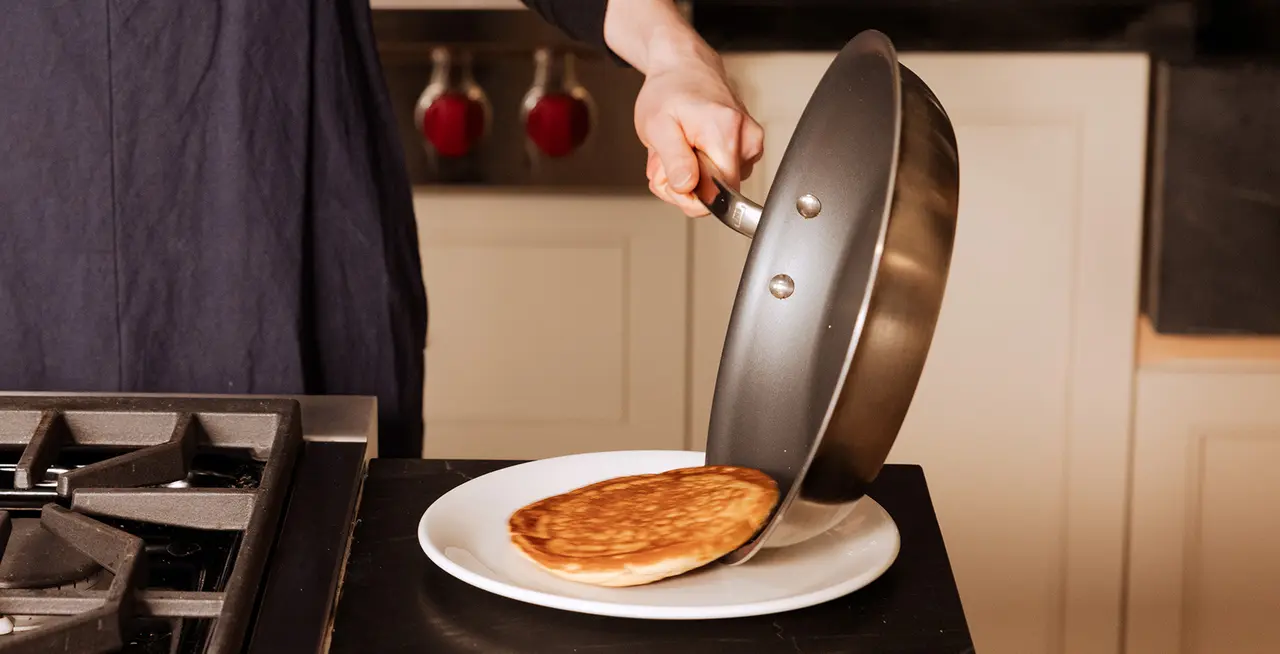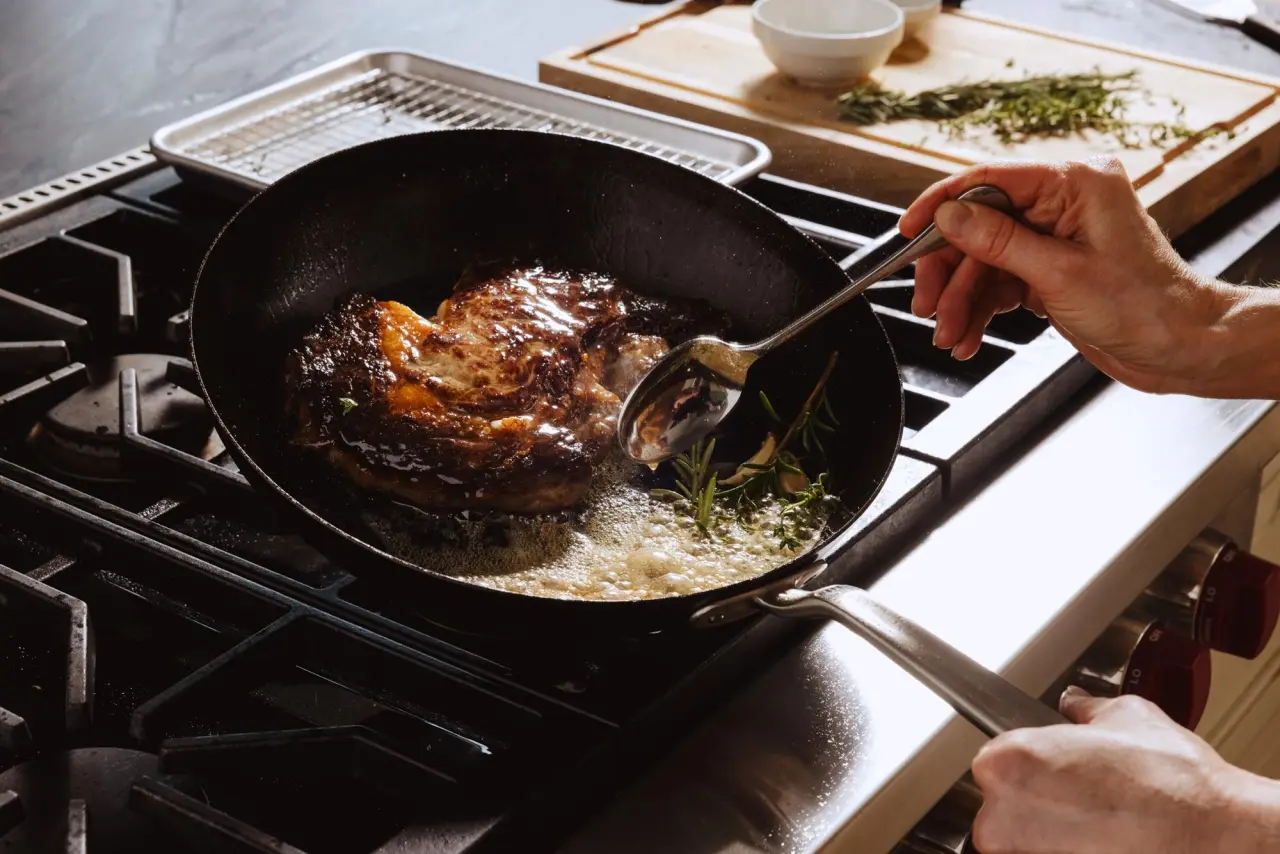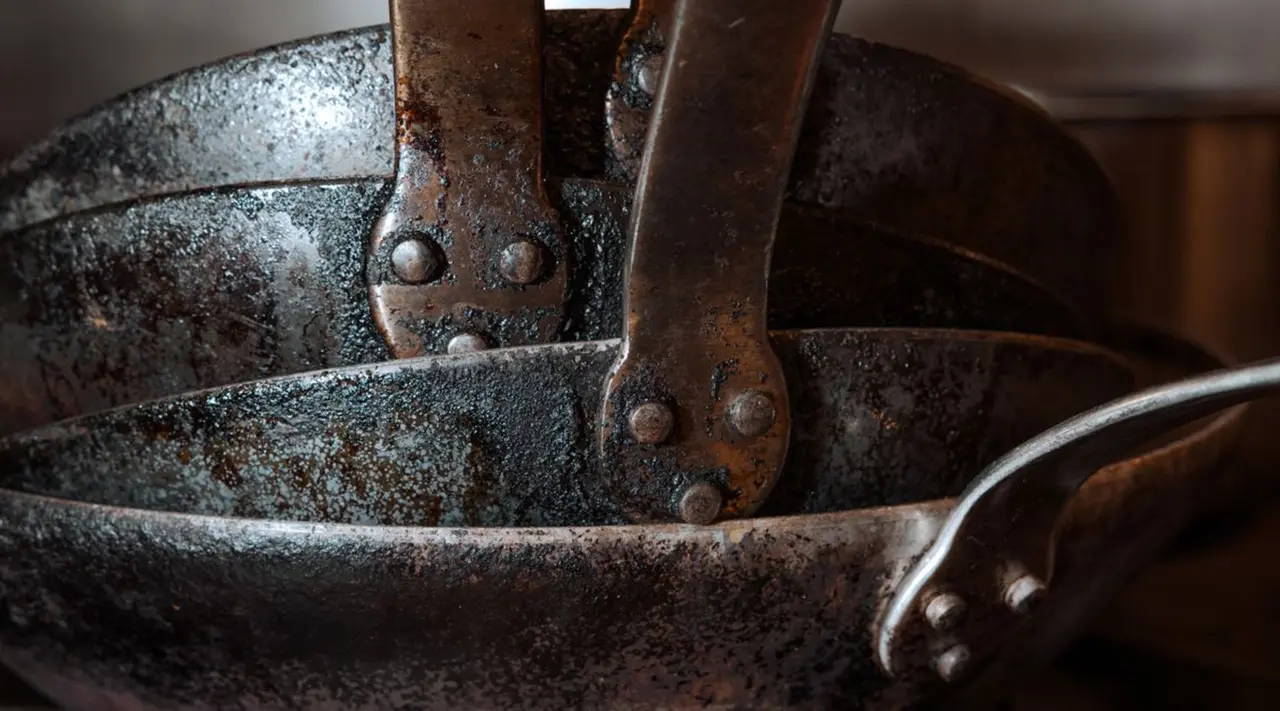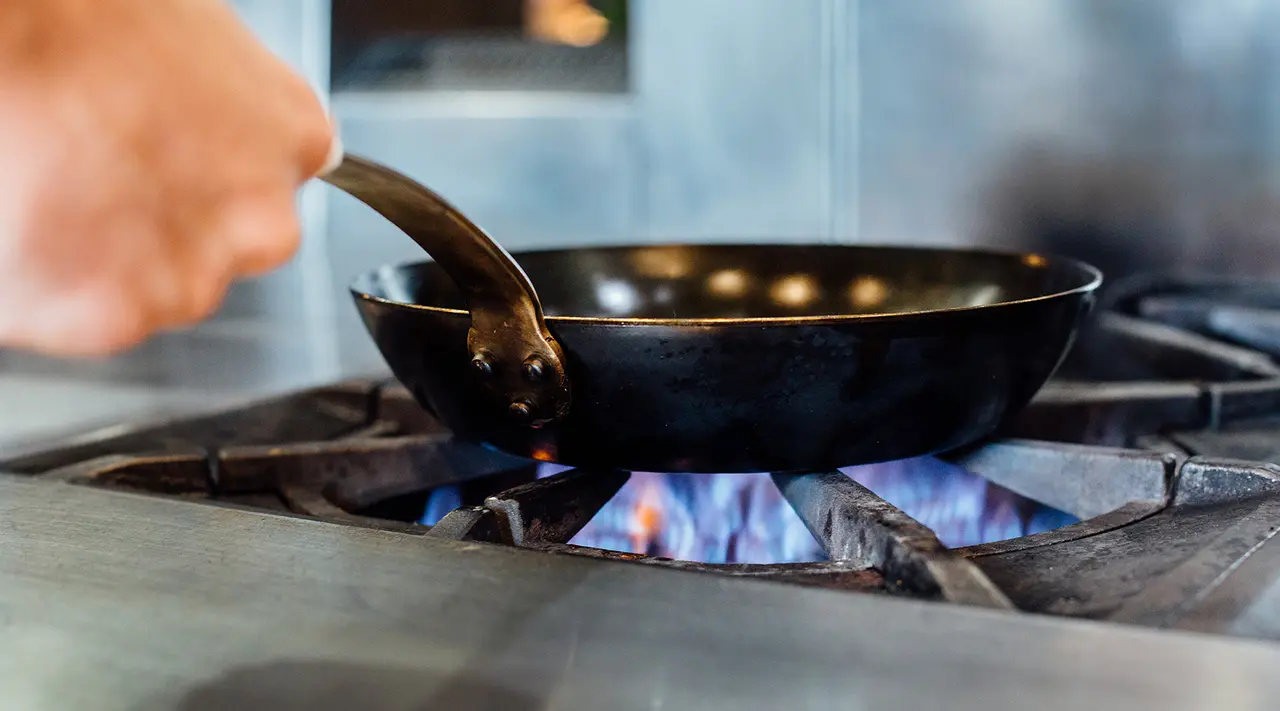When you cook with a non stick pan, you expect it to be just that: Non stick. Layers of coating make it easy to cook even the most delicate ingredients, with easy clean-up to boot.
But what happens if your scrambled eggs start sticking or your flaky fish doesn’t effortlessly flip? Seeing your pan lose the qualities that make it a staple in kitchens around the world can be frustrating—but it doesn’t necessarily mean your pan is done for good. Here’s how to determine whether your non stick pan can be fixed, along with how to do it.
Can Non Stick Pans Be Fixed?
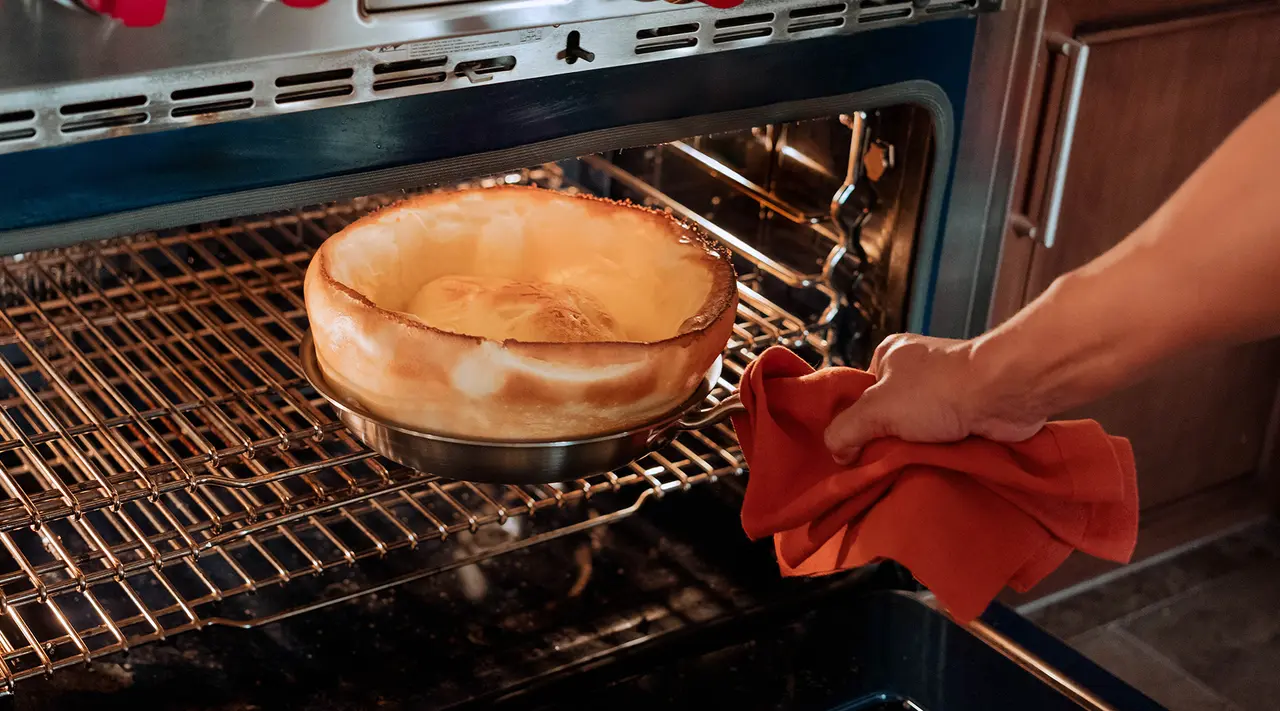
Technically, yes, there are a few things you can do to revive a non stick pan that’s losing its non stick properties. That said, some damage is irreversible. If your pan has lost all non stick abilities, is warped, or if the coating is peeling, chipping, burnt, or deeply scratched, then it’s likely time to replace the pan.
Compromised non stick cookware not only makes cooking messier and more difficult, but also comes with health risks resulting from the coating flaking off or harboring bacteria (in the case of deep scratches through the coating to the metal underneath).
How to Fix Non Stick Pans

That said, if your pan has lost its non stick qualities just in certain spots or has one or two superficial scratches in the coating, it may be possible to save it. If you’re looking for a way to encourage your pan to be as non stick as it was out of the box, there are a few steps you can take.
If your pan is relatively new, has been treated well, and/or doesn’t show any other obvious signs of wear, then begin by cleaning your pan with dish soap, hot water, and a vigorous scrub with a dish sponge. Sometimes, built-up grime from previous, not-so-thorough cleanings can cause buildup between the coating and your ingredients. Be sure to remove all greasy residue, and do not use anything more abrasive than the rough side of a soft sponge.
If your non stick pan is a couple years old and not as non stick as it once was, then it may just be a question of adding slightly more cooking oil or fat to your pan prior to cooking, swirling it over the cooking surface, and allowing it to heat up before adding your ingredients. While this isn't a long-term solve, it can be helpful in mimicking the non stick properties it had out of the box.
If your non stick pan is still, well, sticking, then it may be time to replace the pan. Opting for a high-quality, well-made pan means a longer lifespan and less frequent replacements, so you can worry more about perfecting your soft-set French rolled omelette and less about whether it’ll stick.
What Causes a Non Stick Pan to Lose Its Non Stick Qualities?
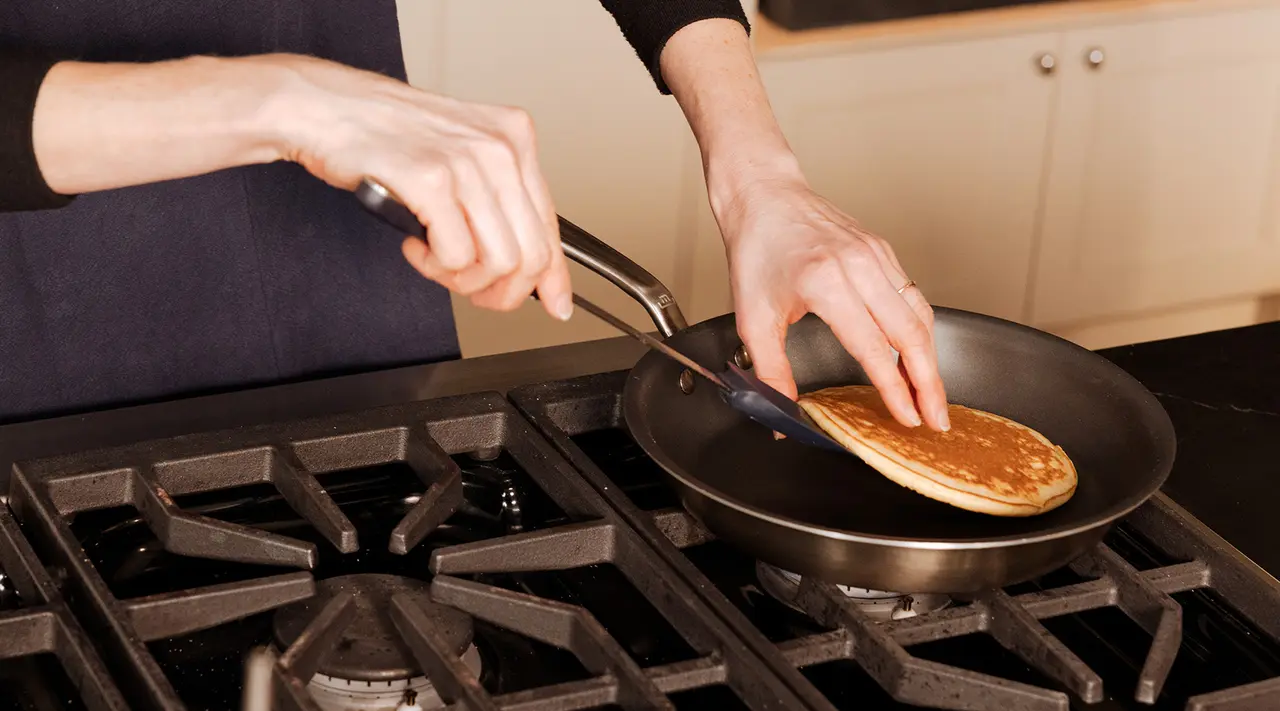
There are a few factors that may have caused your non stick pan to lose its namesake qualities.
Age
The first (and most common) is age. Even the most high-quality non stick cookware won’t last forever—that’s just the reality of a pan with coating. Unlike heirloom tools like cast iron and carbon steel that can be passed down generation to generation, non stick’s lifespan is limited by current technological capabilities.
While the pan itself may be long lasting and high quality—like our ProCoat Non Stick Collection, all of which begins its life as Award-Winning Stainless Clad—all non stick coatings eventually deteriorate. That said, proper care can extend the lifespan of your pan.
Care
Another factor that goes into worn down non stick coating is how you care for and maintain your pan. A pan that is treated delicately, washed by hand, and stored properly will last much longer than one that’s banged around, scratched with metal utensils, washed in the dishwasher, and stacked between other pans. Especially with non stick, improper care can cause your pan to degrade faster than it would otherwise.
Construction
What your pan is made of and how it’s made both play a factor in how long your pan will last, if it’s fixable, and if it’s even worth fixing—a cheap pan is, in the long run, usually not worth putting forth the effort to repair.
A well-made non stick pan will generally feature several layers of non stick coating over a solidly constructed body. It should provide a non stick surface, oven-safe capabilities, and even, controlled heating.
For example, each piece in our ProCoat Non Stick Cookware Collection features two layers of professional-grade non stick coating over our Award-Winning 5-ply Stainless Clad construction. These are generally a higher price point than cheaply-made aluminum cookware, but we believe that the payoff of a long-lasting pan more than outweighs a higher price at the beginning of its life.
These cheaply made pans often feature a plastic handle, and are typically not oven-safe. All this to say, a high-quality and well-made pan with several layers of non-stick coating will outlast a cheaper one any day of the week.
Heat
Since the coating makes non stick pans more delicate than a cast iron or carbon steel skillet, high heat can over time degrade the lifespan and quality of your pan. Most manufacturers recommend using non stick cookware over low-medium heat, and not blasting it repeatedly over high heat as this can compromise the lifespan of the non stick coating.
This is yet another reason to opt for a high-quality non stick pan—those constructed from durable materials like stainless steel come with excellent heat retention, so you don’t actually need to use high heat. A lower-quality pan will need higher heat to get the desired effect, which will cause the coating to degrade faster.
When to Replace Your Non Stick Pans
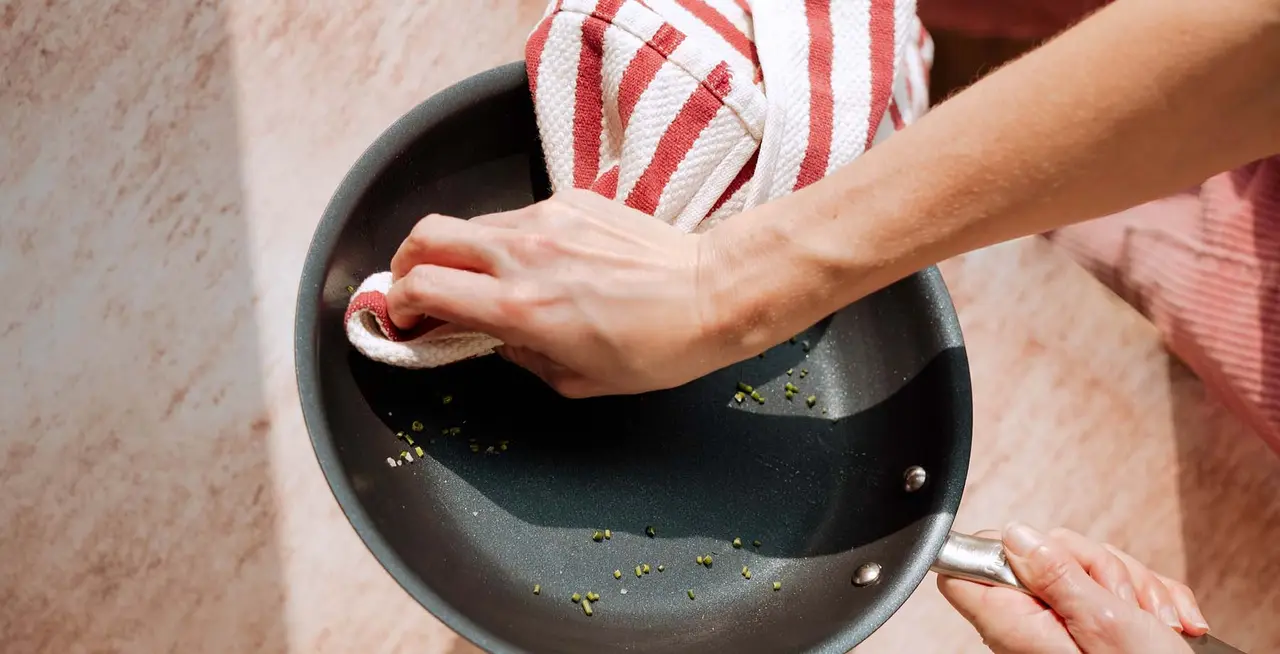
Throwing away and replacing a pan is never the easiest decision to make. A good rule of thumb to follow is that a warped, chipped, deeply scratched, or pan with flaky coating should be replaced. These conditions not only affect the cooking experience with these pans, but could be hazardous. Take a look at our guide for an in-depth look at when to know it’s time to replace your non stick pan.
Ready to Cook?
Non stick pans won’t last forever, but a one like our will outlast cheaply-made competitors time and time again. If your pan has lost its signature non stick properties, then consider a replacement made with professional-grade non stick coating over an Award-Winning Stainless Clad body that can handle the flakiest fish and the most delicate egg dishes without sticking.
